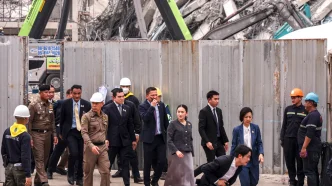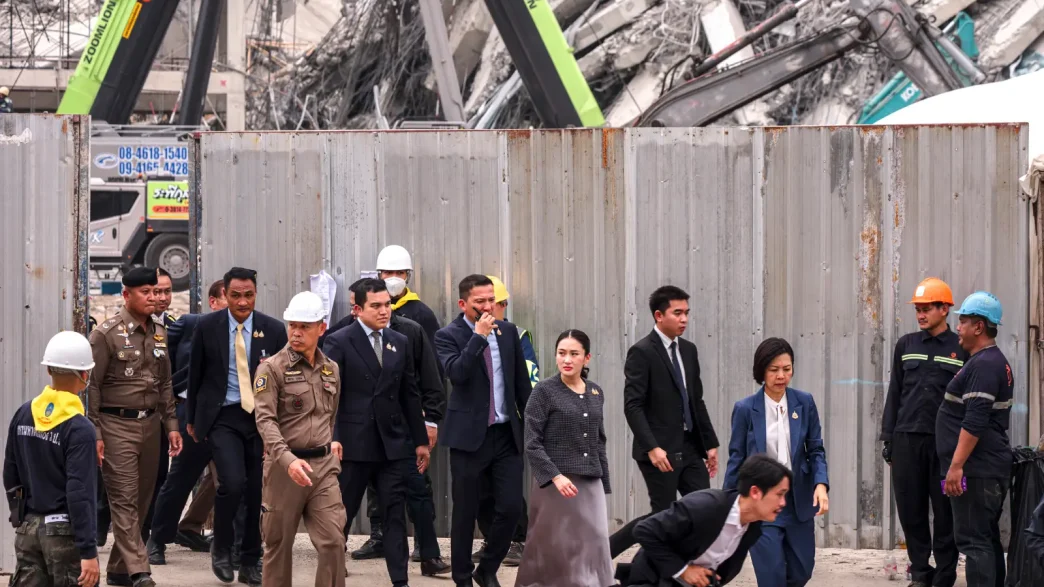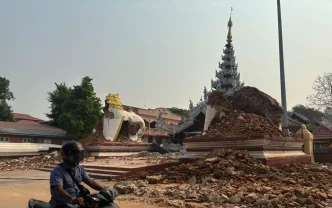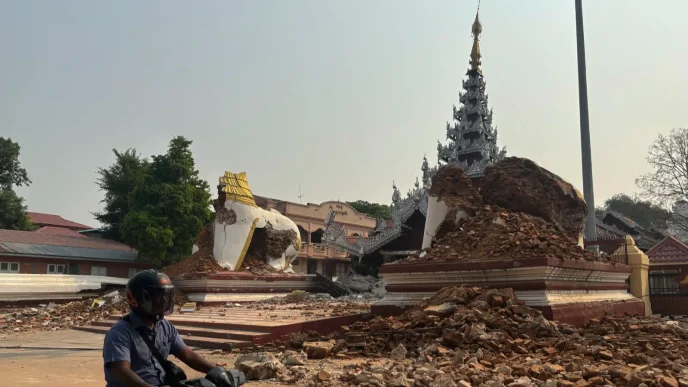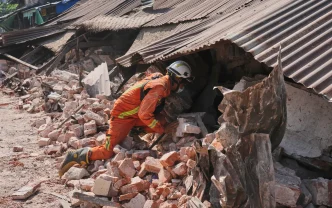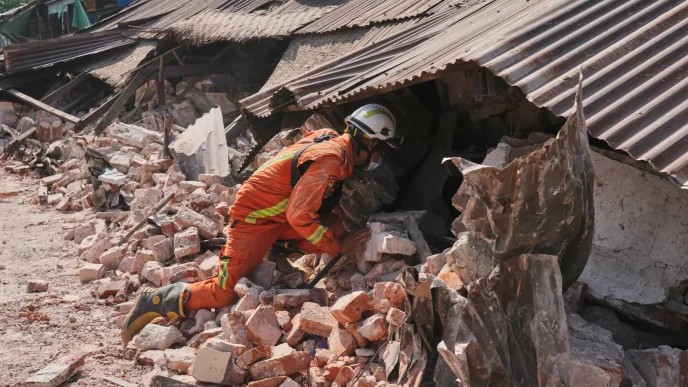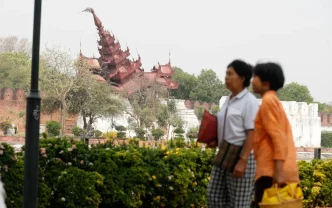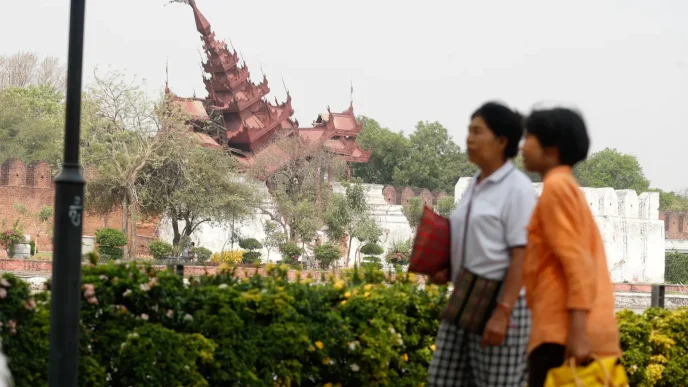Thai Prime Minister Paetongtarn Shinawatra (middle) has ordered a probe into the collapse. (AFP pic)
BANGKOK: Authorities in Thailand are investigating possible factors that led to the devastating collapse of a Bangkok construction site, where dozens remained missing on Monday, three days after a massive earthquake centred in Myanmar.
The planned skyscraper was to house government offices, but the shaking reduced the structure to a pile of rubble in seconds.
The collapse is the worst damage inflicted in Thailand by the 7.7-magnitude quake, which caused widespread destruction – and at least 1,700 deaths – in neighbouring Myanmar.
Numerous high-rise buildings elsewhere in Bangkok were left unscathed with limited reports of major damage, prompting questions as to why the one tower was destroyed.
Bangkok governor Chadchart Sittipunt told reporters on Monday that only two buildings in the city remained inaccessible.
Thai Prime Minister Paetongtarn Shinawatra had expressed concerns on Saturday, questioning why the collapsed building was the only one in the capital to suffer major damage.
“I have questions in my mind,” she said. “What happened from the beginning since it was designed? How was this design approved? This was not the first building in the country.
“We have to investigate where the mistake happened.”
Paetongtarn ordered a probe into the incident involving a group of experts who she said would report back to her this week.
Some substandard steel
Critics have said that the steel bars used to link the building’s concrete structures may have been too thin, or not of sufficient quality.
A number of steel rods were taken from the rubble and put through various technical examinations in front of journalists on Monday afternoon.
Industry minister Akanat Promphan said on Sunday that six types of steel had been found, all from a single producer.
“The collapse of a building can come from several factors, from design, construction (and) material specification,” he said.
“Most important is the standard of the materials.”
Nontichai Likhitaporn, inspections director at the Thai Industrial Standards Institute, told a news conference that some of the steel was found to be substandard, though most was acceptable.
Nattaphol Suthitham, from the Engineering Institute of Thailand, said the use of substandard steel would put the building at greater risk, but was not necessarily the sole cause of the collapse.
The confirmed death toll for Bangkok stood at 19 on Monday, with fears that the number could significantly rise as dozens remain missing under the building’s rubble.
Morning rain on Monday gave way to a hot, humid and overcast afternoon as responders worked to remove debris and locate any remaining survivors.
Meanwhile, concerns have also been raised about Thailand’s emergency response system, after a text message alert system experienced delays when Friday’s quake struck.
“Our problem is that the sending of messages was slow and did not cover enough people,” Paetongtarn said on Saturday.
The prime minister has called a meeting for Monday with government departments responsible for sending the SMS alerts to the public, Thai media reported.
